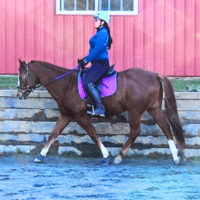Horse blinders, also known as blinkers, are pieces of horse tack used in various equestrian disciplines.
Essentially, these are firm leather or plastic pieces attached to a horse’s bridle, specifically on the cheekpieces, to prevent the horse from seeing to the side and behind.
The primary purpose of blinders is to keep the horse focused on what’s ahead, reducing the chances of them becoming distracted or spooked.
Understanding the benefits and reasons horses wear blinders is crucial for anyone involved in horse care or equestrian activities.
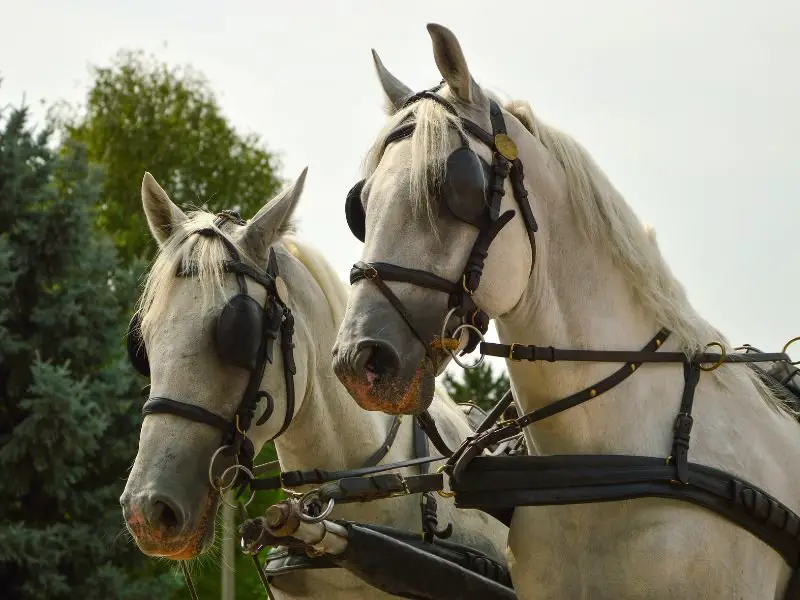
The History of Horse Blinders
The use of horse blinders dates back to ancient times. Early versions of blinkers, made of leather or fleece tubes, were used in Roman chariot races.
The evolution of blinders varied in different cultures and periods, reflecting the needs of the time and the purpose for which the horses were used.
For example, working horses that pull carriages in busy city streets were often fitted with blinders to keep them focused, preventing them from being startled by side to side movements.
The introduction of modern horse blinders occurred in the 17th century and quickly became a standard part of the harness for driving horses and racehorses.
Today, we see a variety of blinders, including the full cup blinder and the French cup blinder, used for different reasons.
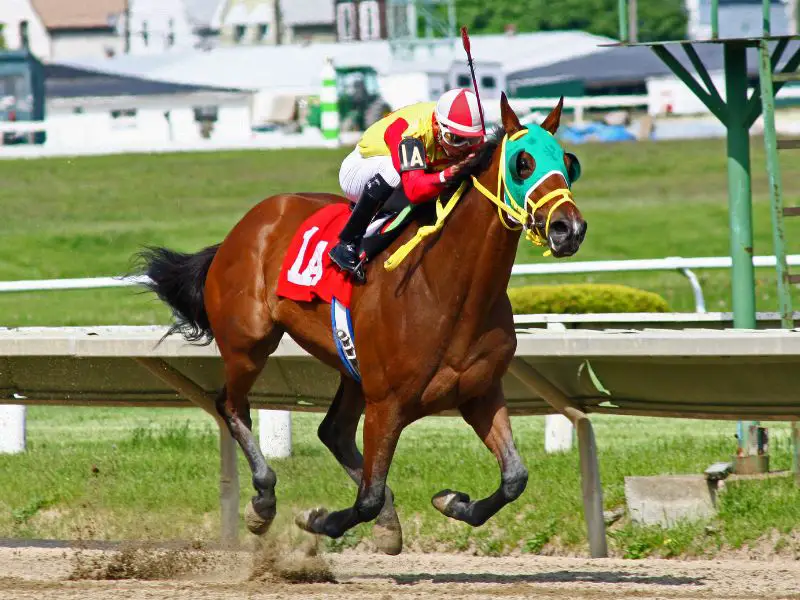
Understanding the Purpose of Horse Blinders
Blinders work by limiting a horse’s peripheral vision.
By focusing their field of vision directly in front, blinders allow horses to concentrate on their task, whether it be pulling a carriage or racing on a track.
There are several benefits to using blinders:
- Reduced distractions and improved focus: Blinders help prevent horses from seeing distractions in their peripheral vision, keeping them focused on the path ahead.
- Increased safety for both horse and rider: Blinders can minimize the risk of accidents caused by a horse becoming startled or shying at sudden movements or objects.
- Minimized anxiety and stress levels in horses: As prey animals, horses have an in-built “predator threat zone” in their field of vision. By limiting this, blinders can help horses ignore those instincts and relax, particularly in high-stress environments like a busy pasture or a racecourse.
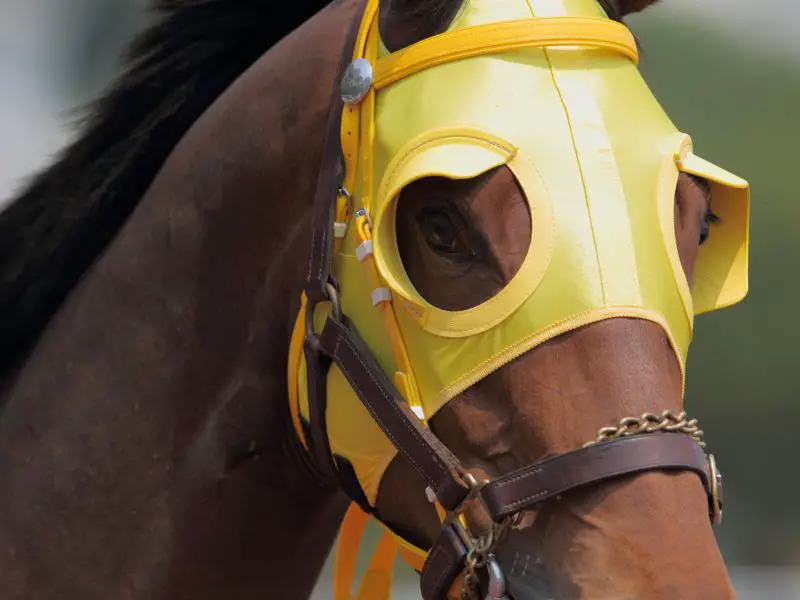
Types of Horse Blinders
There are several types of horse blinders available today:
- Traditional leather horse blinders: Made of leather, these blinders are typically attached to the bridle with cheekpieces.
- Modern plastic or metal blinders: These are lighter and often less restrictive, allowing a limited range of rear vision.
- Specialized blinders for specific purposes: Racing blinders, also known as blinker hoods, may be used on racehorses. Winkers, less restrictive than standard blinders, are often used on driving horses. A “shadow roll” is a noseband that limits the horse’s view of the ground, helping to prevent the horse from shying at shadows.
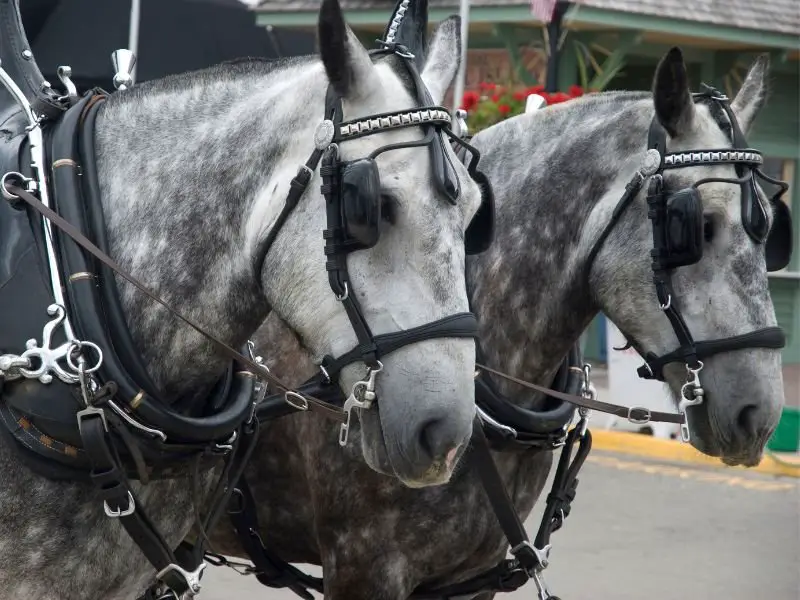
Controversies and Debates Surrounding Horse Blinders
Like many aspects of animal care, the use of horse blinders is not without controversy.
Some critics argue that blinders restrict the horse’s natural field of vision, potentially causing stress.
They suggest that proper training can eliminate the need for blinders, allowing horses to adapt to their environment naturally.
However, supporters counter that empirical evidence shows improved performance when horses wear blinders, particularly in racing or carriage driving.
Many experts argue that the use of blinders can improve horse welfare, helping them to ignore the signals from their evolutionary instincts that might cause them unnecessary stress.
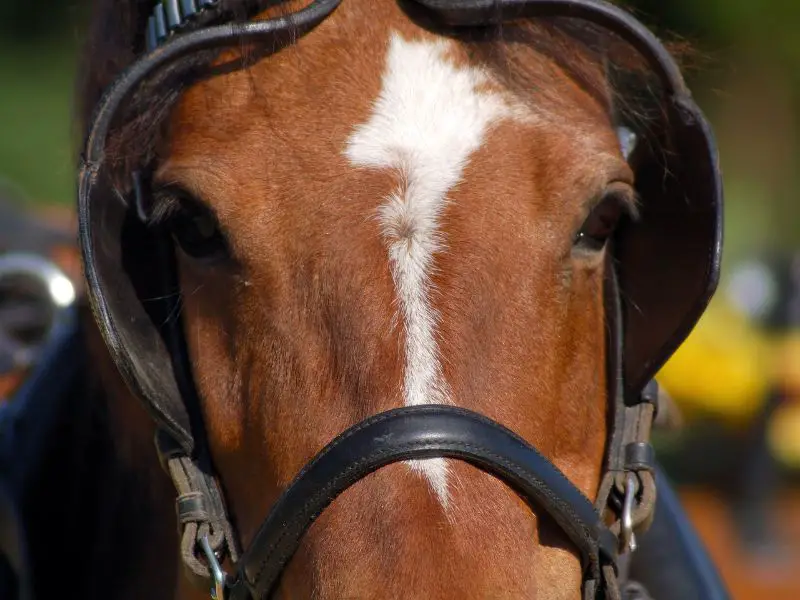
Proper Usage and Care of Horse Blinders
Correct fitting of blinders is crucial to ensure they are effective and comfortable for the horse.
The blinders should sit securely on the horse’s head without causing discomfort.
Regular maintenance and cleaning of blinders, especially leather ones, is also important.
Common mistakes to avoid when using blinders include fitting them too tight, which can cause discomfort, or too loose, which can render them ineffective.
Always ensure the horse’s eyes are free from obstruction and check for signs of rubbing or discomfort.
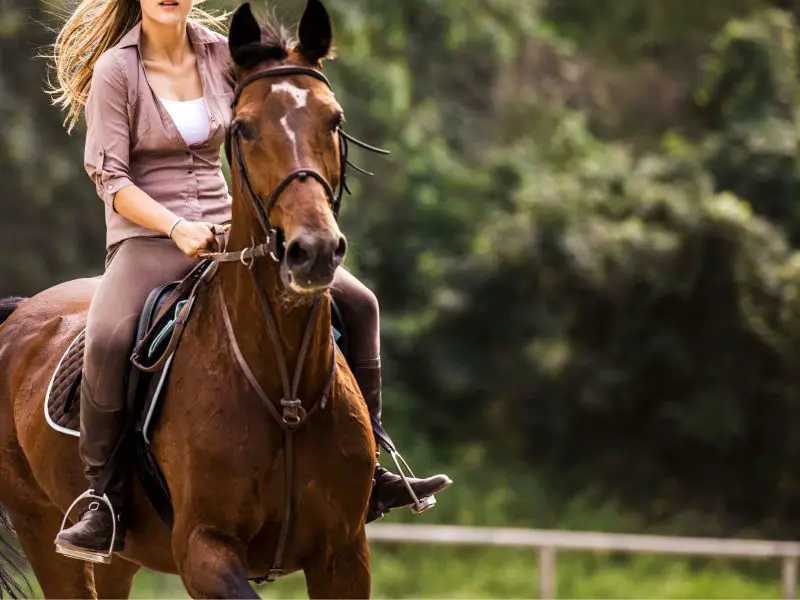
Alternatives to Horse Blinders
There are other methods and equipment designed to reduce distractions for horses.
For example, a fly mask can be used to protect a horse’s eyes from insects, while a blindfold may be used temporarily for specific tasks.
Additionally, various training methods can improve a horse’s focus and desensitize them to distractions without the need for blinders.
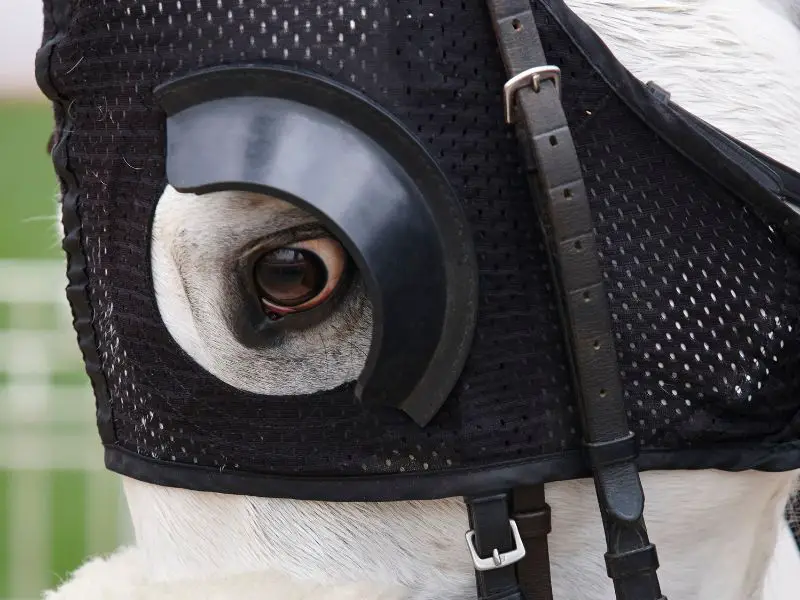
Wrapping Up About Horse Blinders
Horse blinders serve an important role in many equestrian disciplines. They have both benefits and controversies surrounding their use.
It’s crucial to remember that every horse is unique; what works for one horse may not work for another.
The decision to use blinders should always prioritize the horse’s welfare and comfort.
In the end, understanding why and how to use horse blinders properly is key to ensuring the best outcomes for both horse and rider.
Remember, while blinders can help horses focus and reduce stress, they’re not a substitute for proper training and handling.
Now that you know a bit more about horse blinders, why don’t you learn more.
Cheers, Kacey
P.S. Did you like this article? Gallop over to:

